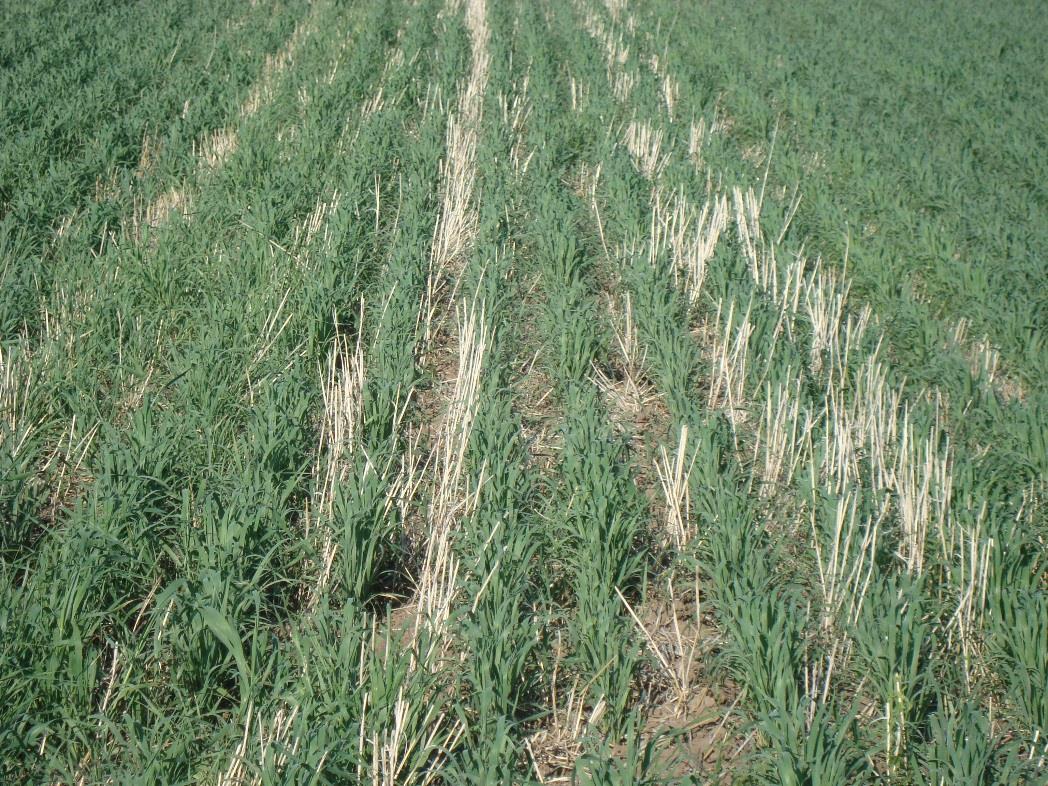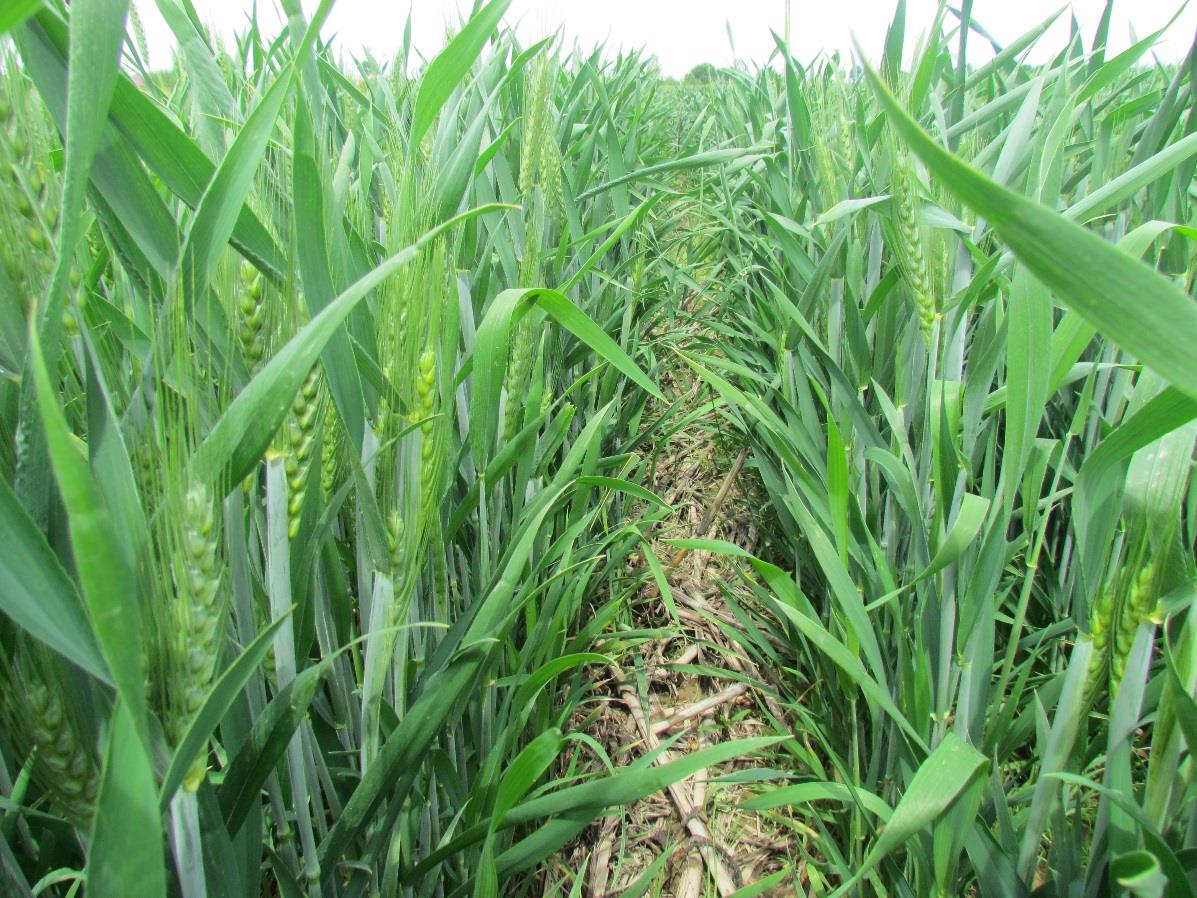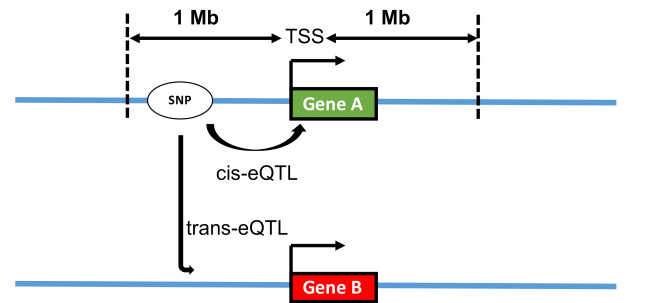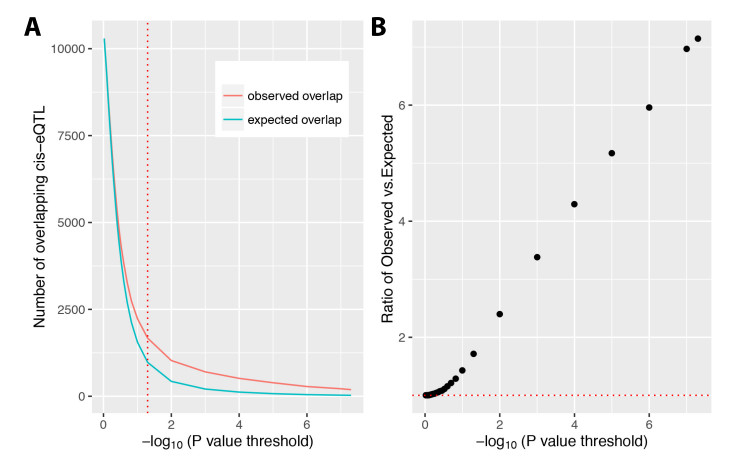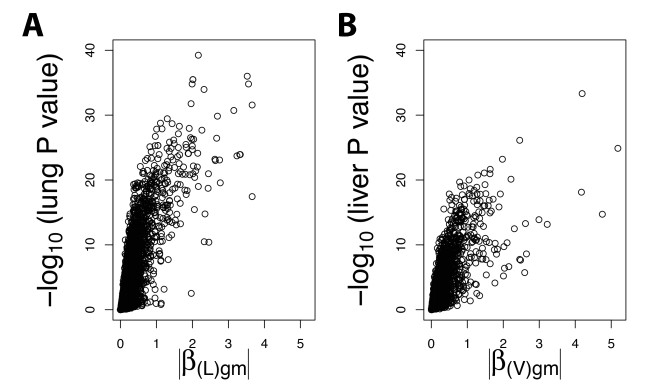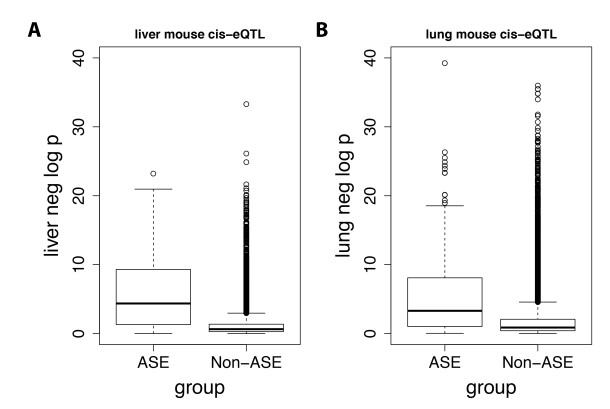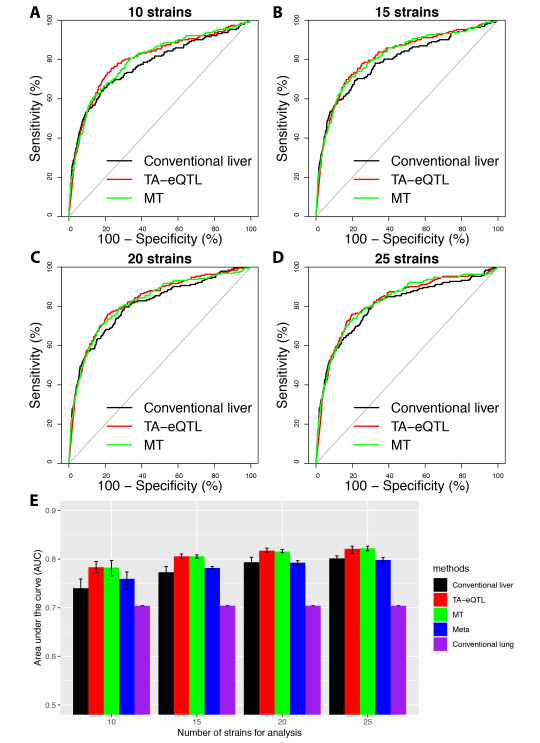1. Introduction
Central Asia comprises the five independent republics Kazakhstan, Kyrgyzstan, Tajikistan, Turkmenistan and Uzbekistan. Six of the agro-climatic zones in this vast region occupy about 90% of the entire region. Two of the agro-climatic zones (Semi-arid-cold winter-warm summer, and Arid-cold winter-warm summer) alone occupy up to 60% (Table 1). The climate in Central Asia is mostly arid and semi-arid, and strongly continental, with long, hot summers and short, cold winters. Average annual precipitation, which is concentrated in winter and spring, is about 270 mm, but varies from 80-150 mm in the arid regions to 600 to 800 mm in the semi-arid mountainous zones. The land area of the five countries covers about 393 M ha (Table 2).
Table 1. Main agro-climatic zones and extent of land area under CA. (Adapted from [4])
| Agro-climatic zones§ | Total area, ha | Area planted with elements of CA, ha | Description of the elements | Source |
| Semi-arid, cold winter, warm summer | 151,387,760 | 13,700,000§ | Including 2,100,000 ha of no-tillage, i.e. direct seeding of spring wheat and barley | Ministry of Agriculture of Kazakhstan |
| Semi-arid, cold winter | 26,419,800 | | | |
| Sub-humid, cold winter | 23,617,700 | | | |
| Arid, cold winter, warm summer | 123,027,520 | < 700,000§ | Conservation tillage, sowing of winter wheat into standing cotton | Ministry of Agriculture and Water Resources of Uzbekistan, Ministry of Agriculture of Tajikistan and Ministry of Agriculture and Melioration of the Kyrgyz Republic |
| Arid, cool winter, warm summer | 19,572,560 | | | |
| Semi-arid, cool winter, warm summer | 5,991,600 | | | |
| §for detailed description of the agro-climatic zones, see [4] and [5]. |
Table 2. Land resources, population and various agricultural indicators of five Central Asian countries.
| Country | Total territory (M ha) | Land area (M ha) | Cropland (M ha) | Irrigated land (M ha) | Rainfed land (M ha) | Population (M) | % rural population | Per capita cropland (ha) | % Agric. GDP |
| Kazakhstan | 272.5 | 269.7 | 24 | 1.6 | 22.1 | 17.01 | 42.8 | 1.41 | 5.3 |
| Kyrgyzstan | 20.0 | 19.2 | 1.4 | 1.1 | 0.3 | 5.93 | 63.4 | 0.23 | 25.8 |
| Tajikistan | 14.2 | 14.0 | 0.9 | 0.7 | 0.2 | 8.61 | 71.4 | 0.10 | 19.8 |
| Turkmenistan | 48.8 | 47.0 | 1.8 | 1.8 | 0.0 | 5.41 | 72.0 | 0.33 | 22.1 |
| Uzbekistan | 44.7 | 42.5 | 4.9 | 4.3 | 0.5 | 31.00 | 63.5 | 0.15 | 19.4 |
| Total | 400.3 | 392.7 | 33 | 9.5 | 23.1 | 68.05 | | | |
| Mean | | | | | | | 62.6 | 0.48 | 9.9 |
| Source: [6,7,8,9,10] |
Mikhalev and Reimov postulated that Central Asia’s drylands are to be regarded as dry steppe, semi-desert, desert, and salt marshes, which are known to be vulnerable to different kinds of degradation including soil degradation (here defined as a loss of fertility, or increase in salinization or waterlogging), degradation of pastures (due to overgrazing and excessive agricultural and firewood harvest), degradation of forests (due to illegal logging, fires, grazing, erosion), and erosion, landslides, and mudflows [1]. Extensive and intensive land use during the Soviet Union period (1924-1990) and disorganized land management systems introduced after the collapse of the Soviet Union (1991) worsened land degradation in Central Asia. Mono-cropping and a production strategy aimed at increasing the production of agricultural commodities without considering environmental consequences have been listed as major causes of past and on-going land degradation [2,3].
Gupta et al. argued that during the post-Soviet period, the three primary causes of land degradation included the (i) mismanagement and over-use of natural resources, (ii) insufficiency of economic infrastructures and market mechanisms, and (iii) insufficient development of capacity and weak inter-sector coordination [11]. Despite the control of areas by governmental agencies during Soviet reign, the on-going land degradation could not be stopped and therefore remained high on the political agendas of the countries in Central Asia after independence.
Areas under land degradation are wide spread in the arid and semi-arid zones of the Central Asian countries, and comprising over 80% of the agricultural area [12]. Some 68% of the agricultural land in the region is degraded due to erosion and increased salinity [3] (Table 3). The degradation of agricultural land in Kazakhstan and Uzbekistan has amounted to 73% and 44%, respectively, mainly caused by increased soil salinity, erosion and loss of vegetation cover. Most of the land resources in Kyrgyzstan and Tajikistan are prone to erosion due to the high proportion (above 90%) of mountainous areas in these two countries (Table 3). The types of degradation within a country vary according to land use type. However, the largest portion of the degraded land is in response to improper farming practices [3]. In particular, the numerous soil tillage practices, which invert the soil using heavy machinery with high ground pressures, agricultural practices that neglect to protect the soil surface, and the insufficient supply of organic material to the soil has resulted in increased soil erosion, decrease of topsoil depth and increase in salinity, with consequent losses in soil fertility and land value. In addition, poor irrigation management have resulted in soil degradation due to waterlogging (Table 3).
Table 3. Soil degradation in Central Asia, %.
| Type of soil degradation | Percent of Agricultural land |
| Kazakhstan | Kyrgyzstan | Tajikistan | Turkmenistan | Uzbekistan |
| Erosion | 17.2* | 85.0* | 75.0* | 8.9* | 11.6* |
| Waterlogging | 8.7** | 1.0** | 3.6** | 3.2** | 8.7** |
| Salinity | 47.7** | 0.5** | 5.0** | 19.1** | 24.4** |
| Total | 73.6** | 86.5** | 83.6** | 31.2** | 44.7** |
| *[13] **[3] |
The on-going degradation of soil resources in Central Asia is not only widespread, but represents a direct threat to the productive capacity and sustainability of the agricultural production base in the region. Substantial improvements in soil management are therefore direly needed to counter these threats.
Conservation Agriculture (CA) has the potential to provide various tools to combat soil degradation as well as raise productivity and resilience, and reduce production costs [5,14,15,16]. Conservation Agriculture rests on three interlinked principles: (i) no or minimal mechanical disturbance of the soil through no-till direct seeding to maintain the quality and productivity of the soil, which is at the base of all CA-based farming practices and systems; (ii) maintenance of a permanent soil mulch cover with for instance plant residues including stubbles or cover crops to improve infiltration, reduce water loss and erosion, protect the soil from harsh climate extremes, and serve as a substrate for soil microorganisms and fauna; and (iii) diversified cropping systems over time (rotations, sequences) and space (associations) to further strengthen the systems’ resilience against biotic and abiotic threats [16,17,18]. In this way, CA practices provide important benefits to the environment and the land user alike [18,19,20].
2. Combating soil degradation with CA
Originally, CA practices were promoted to combat soil degradation and erosion resulting from tillage that caused the destruction of soil structure and aggregate stability, deplete soil organic matter and soil biological health. In later years, CA helped to reduce production costs, and raise productivity (yield and efficiency) [17]. During the past 20 years, CA has spread across all continents and most agro-ecological zones, particularly in North and South America and in Australia, but more recently also in Asia, Africa and Europe. In 2013, CA was used globally on 155 M ha of annual cropland, corresponding to about 11% of global annual cropland [21,22]. About 50% of the CA area is located in developing countries.
In Central Asia, the research on crop residue management under no-till and its effect on soil erosion is still in its infancy. Yet, a review of a wealth of literature from outside Central Asia, illustrates numerous benefits. Hence, CA has been shown to be an innovative approach that helps in reducing soil erosion, improving water use efficiency as well as soil quality and helps in increasing soil organic matter, decreasing energy use and above all improving crop and land productivity and in turn the income of (resource poor) farmers [22,24]. For instance, soil erosion in Brazil decreased from 3.4-8.0 t ha−1under conventional tillage to 0.4 t ha−1under CA, whilewater loss decreasedfrom approximately 990 to 170 t ha−1 [25,26]. The reduction in soil erosion led to enhanced surface and ground water quality whilst crop residues retention on the surface helps in holding soil particles in place and keeping any applied plant nutrients and pesticides on the field.
The overarching experimental evidence from the many different production environments worldwide demonstrate that CA-based management can have both immediate (e.g. reduced production costs, reduced erosion, stabilized crop yield, and improved water productivity) and long-term benefits (e.g. higher soil organic matter contents and improved soil structure), although the magnitude of these benefits tends to be site and year specific depending on the nature of the initial status of land degradation and the prevailing yield level [27,28,29,30].
Increasingly, CA is considered to be climate-smart also, because of its better adaptability to climate change, and as a means to reach a sustainable intensification of agricultural production with minimum negative impacts on the environment [31,32]. As such, CA is a means for the integration of ecological management with modern, scientific, agricultural production practices. This holistic embrace of knowledge, as well as the capacity of farmers to apply this knowledge, innovate and adjust to evolving local conditions, ensures the sustainability of those who practice CA. A major strength of CA is furthermore the option of a step-wise implementation by farmers of complementary, synergetic soil husbandry practices that build to a robust, cheaper, more productive and environmentally friendly farming system. Therefore, CA practices have an important role to fulfill in the production systems of Central Asia.
3. Effect of CA on soil quality and land degradation problems
Soil organic matter (SOM) dynamics: Worldwide evidence has also shown the main benefits of no-till or low soil disturbance tillage on soil organic matter and soil carbon (C) interactions. The maintenance of these important parameters for soil quality depends on a permanent soil mulch cover developed through crop residue retention or cover crops, which is one of the three main principles of CA. In CA in Central Asia, the use of cover crops is not fully developed yet, but crop residues including stubble are retained on the soil surface after harvest where they benefit soil properties and crops, as shown by numerous field investigations [33,34]. Keeping crop residues on the soil surface reduces soil losses, protects the soil from water and wind erosion, and adds organic matter to the soil both in the rainfed and irrigated agriculture conditions worldwide [35,36].
In CA, no-till, direct seed drilling is the only mechanical operation causing disturbance to the soil surface. All other operations that are normally employed under “conventional tillage agriculture” in the rainfed areas of Kazakhstan such as sweep tillage, disking and harrowing, are thus not included in CA [2]. Intensive experiences with CA practices in Central Asia date from the year 2000 onward. The concept of CA within the irrigated areas of CA has taken some time to become accepted, which has delayed the experimentation and the documentation thereof.
Organic matter is one of the major indicators of soil quality and biological health, which affects, among other factors, crop yield and the ability of soils to resist erosion. A number of researchers have investigated the impact of different tillage systems on soil organic matter (SOM). There is general agreement that no-till can increase SOM as shown in arid and semi-arid regions in and outside the Central Asia region. Hernanz et al. [37], for instance, conducted a long term experiment in a semi-arid area of Spain using different tillage methods and reported that under no-till with mulch cover, the SOM at a depth of 0-10 and 20 cm had higher organic contents compared to conventional tillage [37]. Numerous results from the irrigated areas of Central Asia showed that crop residue retention improves SOM and soil N content [38,39,40]. The CA practices examined in Central Asia increased SOM significantly with corresponding improvements in soil structure and greater soil moisture holding capacities [38,39].
Most beneficial effects on soil physical properties reported due to plant residue retention were the positive influences on soil quality, decreasing soil bulk density, increasing soil moisture retention, and increasing biological activity of the soil. That is why a general preservation of crop residues, irrespective of its make-up, improved physiological and biological properties of the soil, which in turn significantly increased soil fertility [41]. More recently, the positive impact of no tillage and crop residue management on properties of a silty loam soil under irrigation in Uzbekistan was reported for a rotation of winter wheat and maize for two years followed by cotton for another two years [42].
Soil salinization: The on-going soil salinization in the irrigated areas of Central Asia is predominantly caused by the capillary rise of the ground water. This is the major cause of the on-going cropland degradation, especially in the Aral Sea basin [43,44]. A mulching experiment with crop residues decreased soil salinity under the irrigated conditions of Uzbekistan [45]. Pulatov et al. [39] reported that after four years, a no-till CA system had the lowest soil salinity level of all practices tested, i.e., no tillage and residue retention, which influenced also the location and accumulation of salts by reducing evaporation and the upward salt transport in the soil [39].
Soil erosion:Increasing the SOM content and maintaining crop residues on the soil surface also reduced wind erosion [47]. Depending on the amount of crop residues retained on the soil surface, soil erosion could be reduced to insignificant levels compared to the unprotected, intensively tilled exposed fields [48] and this benefit can be harnessed in Central Asia as well. Water erosion too enhances soil degradation in Central Asia, especially on hilly areas and under irrigated conditions. The effective CA practices showed for many years to constitute a promising set of improved and financially feasible methods of crop production, which concurrently reduced wind and water erosion [49]. The regularly occurring wet springs in much of northern Kazakhstan resulted in severe soil erosion of exposed soil surface in fallowed fields [50]. Although information about the effect of slopes is lacking, in general where they are considered to be long, they resulted in water accumulation in the lower parts and in increasing the velocities of runoff water. However, with crop residue retention, soil erosion could be reduced drastically on the cropped areas [50]. Nevertheless, water and wind erosion studies remain rare in Central Asia despite having been acknowledged as being a core reason for on-going soil degradation (Table 3). Based on the research findings and lessons learned from different agro-climatic regions, several remedies could be examined for adoption in the region.
4. Crop yield under Conservation Agriculture practices
Early research from similar semi-arid environments showed the yield enhancing effects on barley of reduced and zero tillage systems compared to conventional practices [51]. Crop yields after four years of permanent bed planting in North-western Uzbekistan was 20% higher with zero tillage system compared to the conventional tillage methods [52]. Although results from numerous findings of CA practices on crop yields have been mixed, in the end crop yield is a critical assessment criterion for farmers. Hence, more research needs to be directed towards yield and its parameters under irrigated agriculture. Similarly, for the rainfed areas, results have been promising, but still are sparse. For example, from 1992 to 1995, minimum soil disturbance tillage techniques were introduced and tested particularly in the northern, rainfed parts of Kazakhstan. Excellent results were obtained throughout the areas cultivated with minimized soil disturbance, resulting in both economic savings and increased crop yields [53].
Many research results from the irrigated areas in Central Asia indicated that bed planting practices improved wheat yields, increased fertilizer efficiency, reduced herbicide use, saved seeds, reduced water demands (on average 30%), and reduced production costs by 25-35% [54,55,56]. According to the Ministry of Agriculture of Kazakhstan, CA and conservation tillage practices were applied on some 11.7 M ha (Table 3), which is 70% of the total area sown to wheat in Kazakhstan [57] (Figure 1). Consequently, the country harvested a record gross output of grain of 20 M t, corresponding to a yield of 1.7 t ha−1 [57]. Hence, CA practices may have contributed to these increased yields and output, although the area under full CA in Kazakhstan is only 2.1 M ha. Results from Tajikistan and Kyrgyzstan showed 25-38% higher wheat yields under raised bed and no-till planting conditions compared to the traditional, tillage-driven planting [54,56].
In addition to yield increases, seeding rates under CA in Kyrgyzstan could be reduced by 50% while irrigation water requirement could be lowered by 27% [54]. Similar results were reported in the irrigated conditions of Tajikistan [56]. On the other hand, Nurbekov et al. reported that the application rate of N had no significant effect on winter wheat yields in no-till and conventional systems in Uzbekistan [40]. The yields with 120 kg N ha−1 rates turned out to be as good as with 140 kg N ha−1 under conventional practices using mouldboard ploughs, while with no-till practices a slight increase in grain yields was observed with the higher N rates. Nurbekov et al. reported that winter wheat yields increased with no-till compared to conventional tillage system [40]. Sanginov and Khalikov, carriying out research on the planting of winter wheat before the harvest of cotton in Yavan and Gozimalik districts of Tajikistan, reported that wheat growth and development under no-tillage system resulted in savings of seed quantity and in increased yield [58]. The adoption of CA methods could thus bring about significant productivity and environmental benefits [41].
So far, only Kazakhstan has issued supportive policies to introduce and spread CA practices and this has increased the area under CA-based practices from virtually none in 2001 to 2.1 M ha in 2013. The other four countries in Central Asia are only gradually moving towards the adoption of supportive policies on CA and in general, a wide-spread adoption of CA is still pending and would need more extension and research support [60].
Permanent raised bed planting in Uzbekistan consists of raised beds that have been prepared and used during a previous season and subsequently used for growing the next crop (Figure 2). Over the last 20 years, Uzbekistan has been researching different ways of introducing grain crops into the existing crop rotations, which included cotton and alfalfa mainly, albeit predominantly during the Soviet Union epoch. However, since 1990s, winter wheat, previously grown under rainfed conditions only in Central Asia, is being cultivated also under irrigation. Research findings showed that a timely, no-till planting of winter wheat in standing cotton is a promising relay cropping practice. As a consequence, the area under this cotton-winter wheat relay cropping has now reached some 600,000 ha annually [59]. Several development projects in Central Asia, supported by the international donor community, currently include the promotion of CA with permanent raised beds system as part of their priority activities, but according to many these efforts need to be intensified [60].
Hence, despite the numerous positive research results, CA is still not widely practices among the farming population in the irrigated areas of Central Asia. This is partly due to a predetermined mindset but also due to the relative complexity of CA practices compared to conventional tillage agricultural practices.
5. Conclusions
Current research evidence from the rainfed areas of Central Asia, shows that CA practices are promising to combat a series of flaws in the existing cropping systems. However, much less research evidence exists for the irrigated areas even though such research has introduced in all five Central Asian countries and while covering the heterogeneous local conditions. These preliminary research results, albeit limited to a few locations, show the potential for achieving similar, or even higher crop yields over time. The CA practices favoured, such as permanent no-till beds, showed their effectiveness in lowering the rate of land degradation caused by soil salinization. Research on CA practices and its role in combating the on-going water and wind erosion have not been placed high on the research agendas yet. However, the maintenance of a soil coverage by residues reduces wind and water erosion, increases water infiltration and storage capacity, which helps reducing crop water stress, improves soil quality and increases organic matter. These benefits are promising to the scientists in the first place, but not yet to farmers! The findings underscored furthermore that CA is not a single, uniformly applicable technology that can be immediately applied anywhere and in a standard manner. Rather, it represents a set of principles that encourage the formulation of locally adapted practices, approaches and methods, which need to be tested, evaluated and then adopted or implemented not only under various climatic setting but also while considering the socio-economic conditions. Hence, also socio-economic research has to be promoted for instance when addressing the residue management component since this needs to be packaged into an easily adoptable technology, acceptable to farmers. Finally, as is evidenced in Kazakhstan, encouraging policies are needed as well as an effective and functioning agricultural extension system, which only is in its infancy in most Central Asia countries.
Further research is needed across the agro-climatic zones that should address in detail the effects of various types of CA crop rotations and mulch covers on weed management, on nutrients, pests and water management, on residue levels, sowing depths, dates and density, and on fertilizer and irrigation rates. Needless to repeat the importance of an impact assessment on livelihoods and environmental conditions including the potential of integrating trees and timber production, pastures and livestock into CA farming systems particularly with small-scale farmers.
Conflict of interest
All authors declare no conflict of interest.









 DownLoad:
DownLoad: 